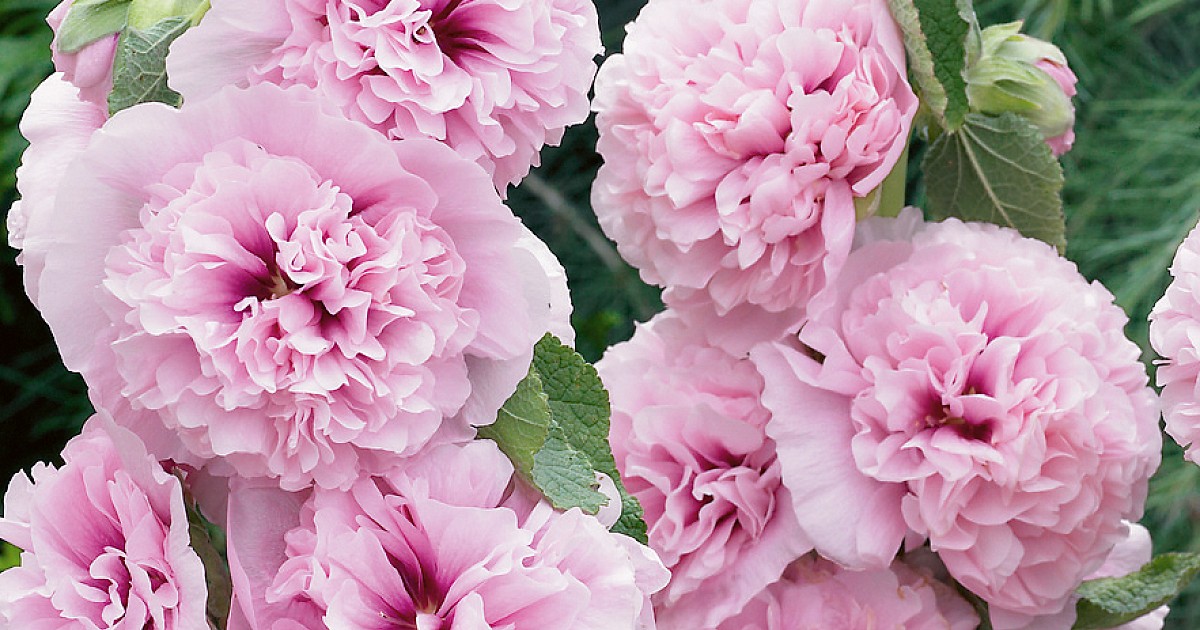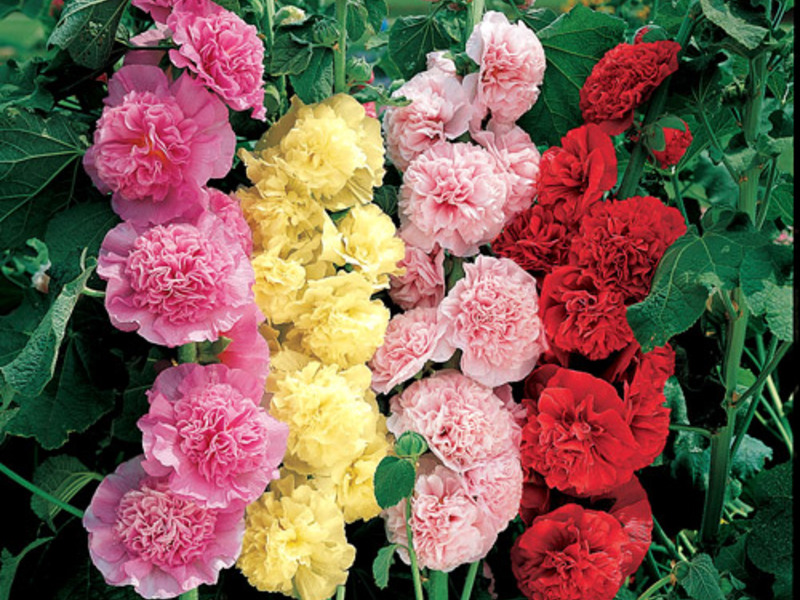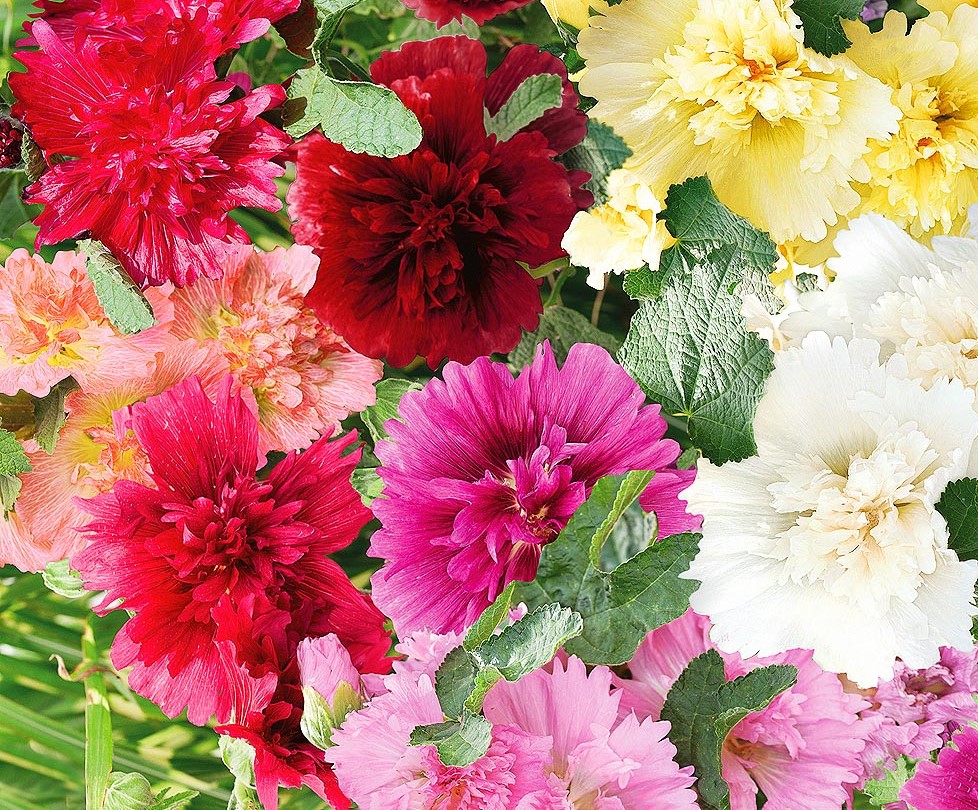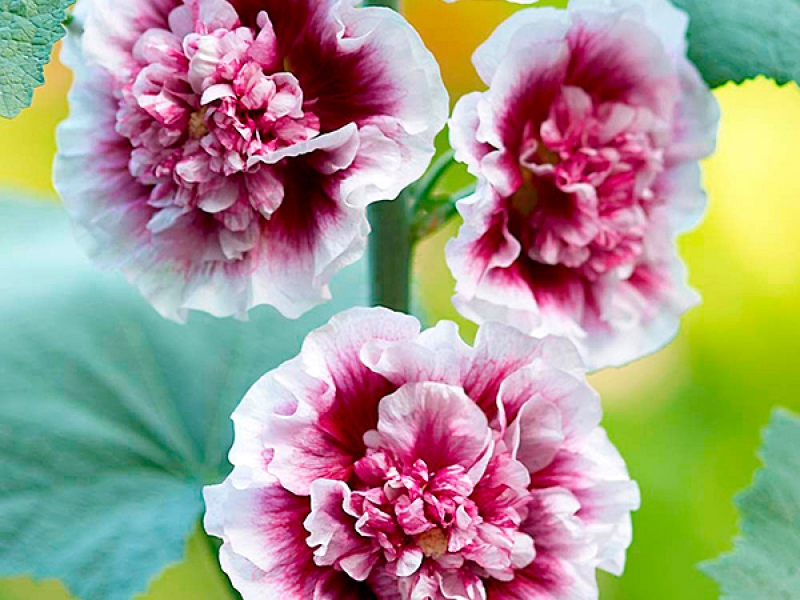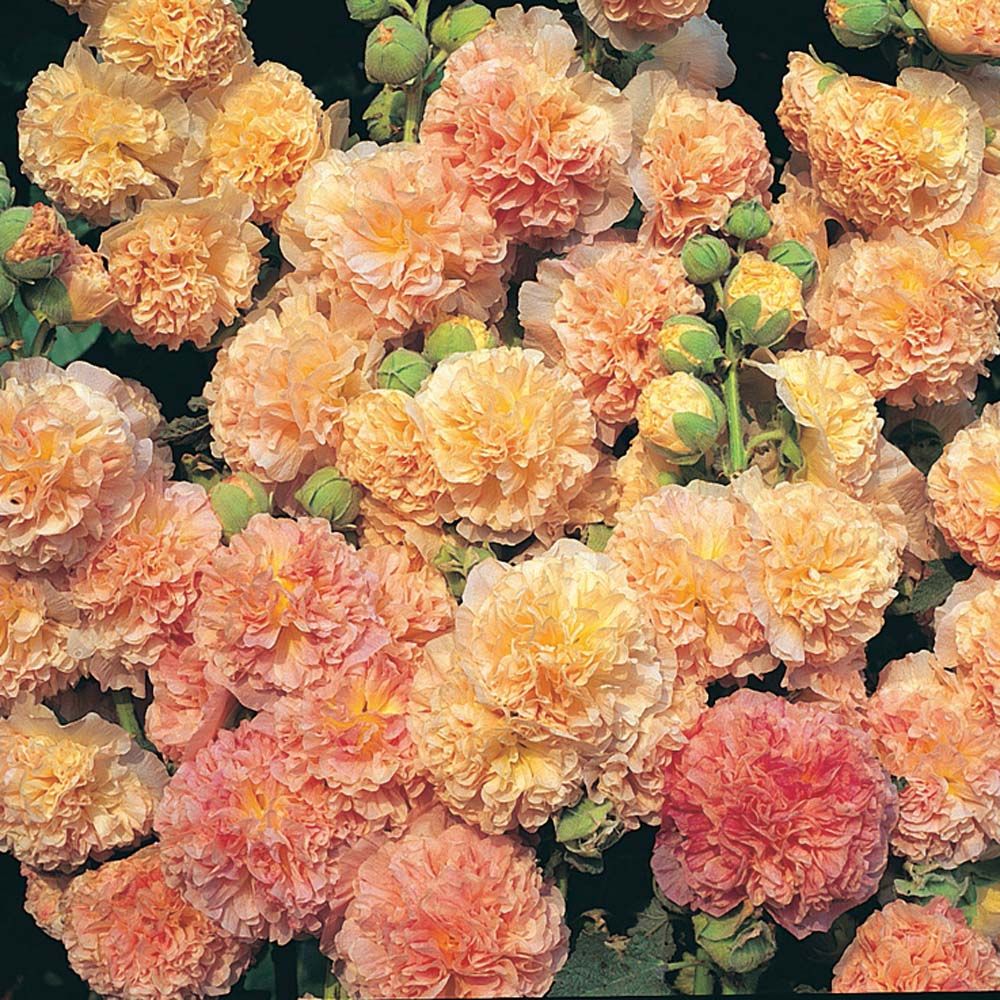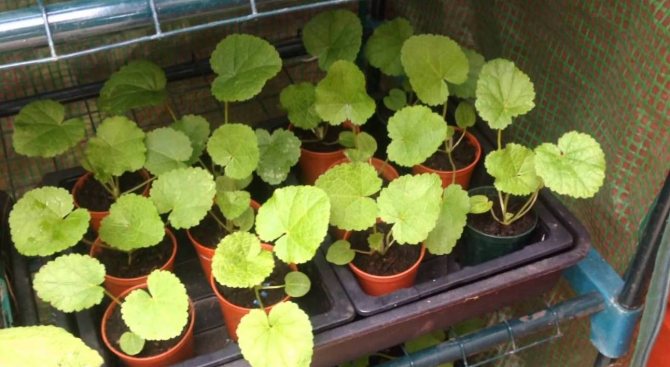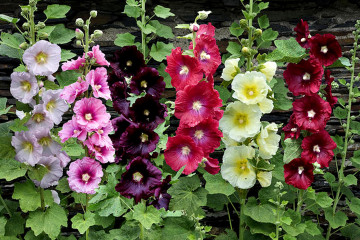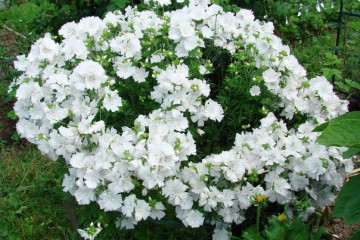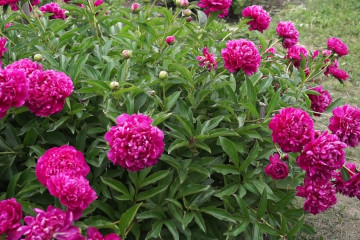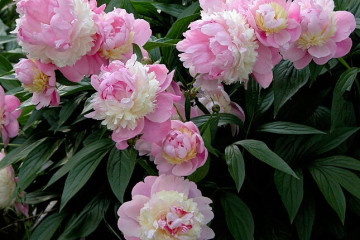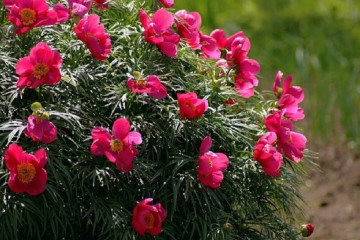Terry mallow - planting and care in the garden
Content:
Malva is one of the most common plants of the Malvaceae family, growing in Europe, America, North Africa and Asia. In Russian, you can find other names for the flower: stockrose, mallow or kalachik.
Briefly about the history of the emergence of a flower
Humanity has been familiar with mallow for at least 5000 years. The Bible mentions that Moses prepared a medicine from mallow to help with fever. In the history of Ancient Egypt, this plant is also referred to as a remedy. Japan considers mallow to be a patron protector against natural disasters, in ancient Rome it served as a universal antidote, in Europe as a helper for brides, and in Arab countries it is eaten. Beliefs, legends and fairy tales are associated with mallow. This flower can often be seen in illustrations for books.
Mallow flowers (or rather plant juice in the form of mucus) have a number of medicinal and strengthening properties, are used in folk medicine, but they also have contraindications.
Common features of terry mallow
Recently, this plant has begun to gain popularity again. One of the most popular species among gardeners is terry mallow. This variety is a hybrid plant, bred by crossing wrinkled mallow and stockrose. Its characteristics:
- It has a lush multi-layered inflorescence similar to smaller peony flowers.
- Each petal has a wavy edge.
- The stems reach two meters in height, of which 75-80 cm is occupied by a peduncle.
- The variety is long-lasting, pleases with abundant flowering from June to mid-autumn.
- The color scheme of the buds varies from pale pink and peach tones to maroon.
- The flower stands for a long time in a bouquet in a vase.
- Flowering starts from the bottom of the peduncle and gradually moves up.
- In the garden plots, annual mallow or a variety of perennial crops is grown.
Favorite varieties of gardeners
In nature, only wild mallow grows, all other types of mallow are grown on purpose. Today, many seeds are sold for growing both common and new mallow, breeding varieties and colors of annual and perennial mallow.
There are more than 30 varieties of mallow. Each has its own characteristics. Knowing their descriptions, the gardener can easily find the right plant for himself.
Chater's Strein variety (Chaters Strain)
The variety has double flowers up to 15 cm in diameter, the flowers are very similar to peonies. The height of an adult stem reaches 2 meters.
Pinafore Mixed variety (Pinafore mixed)
In this culture, flowers are glossy, double or simple in appearance, have many colors, but do not have a smell. The stem of the plant reaches a height of 1 meter.
Majorette Mixed variety (Majorette mixed)
One of the popular varieties. The flowers are semi-double, large, the height of the stem is up to 75 cm. The majorette has all the main colors of mallow.
Queeny Purple variety
A hybrid bred by crossing marshmallow and pink mallow. It has an average height of 75 cm.
Variety Crеme de Cassis (Crème de Cassis)
This mallow is perennial, but is more often grown as a biennial. The height of the bush is from 1.5-2 meters in height. The culture is distinguished by originality - it can have one-flowered, two-flowered, semi-double and double inflorescences with a diameter of up to 12 cm on one peduncle at the same time.The color is also ambiguous - it has a white color at the edges, and varies from red to dark brown in the middle of the bud. Grows well in partial shade and in the sun.
Peach'n'dreams variety (Peach and Dreams)
The flowering of this variety begins in June and lasts until autumn. The diameter of the buds is 10 cm. Their color is peach or pinkish. The buds consist of corrugated-wavy dense petals, in general, the flowers resemble a pompom or peony. The plant is perennial.
Other common varieties
Almost everyone knows what a mallow flower looks like. At the mention of its name, it appears a tall, human-sized plant, densely covered with flowers and found absolutely everywhere. A flower from childhood. Children love to make earrings and crests from mallow petals, they easily stick to the skin, since the mallow flower juice is sticky.
Musk mallow
This variety is low - from 20 cm to 1 meter. Has a musky scent. Stems are straight, rough, densely covered with hairs. The diameter of the flowers is up to 5 cm, the colors are white or pink. The culture requires good lighting of the site, does not like the wind. Grows in soft soils. The most popular varieties of musk mallow are the Rose Tower, White Tower, White Perfection.
Forest mallow
It grows in the wild in forest and park areas in Northwest India, Central and Asia Minor, North Africa and Europe. But gardeners also grow it on the plots.
Forest mallow is squat, 30 to 120 cm high. The plant is biennial. Stems are smooth, straight. Notable varieties are dark purple Black mother-of-pearl and light pink Zebrina. There is also a variety of forest mallow, Blue Fontaine, which grows up to 70 cm, and its flowers are purple with a blue border.
Mallow wrinkled
This is a perennial bush mallow, it is not classified according to special indicators, it is not customary to attribute it to a separate species. But many growers are sure that this plant is not related to the malvaceous family.
Sudanese mallow
A wild plant found in Turkey and Greece, it is cultivated for fruit. This variety has a second name - Sabdariff's hibiscus. The plant has 3-5 stems up to 2 meters high. The color of the buds is black and red.
Mallow pink
The color of the buds of this light mallow is creamy pink. They are densely collected in inflorescences. The height of the stems is 2 meters. Grows well in humid and sunny places. The perennial blooms in the second year after planting.
Hybrid mallow
The plant has several stems and reaches a height of 2 meters. The variety blooms from June to September.
Breeding methods for terry mallow
Cultivation of terry mallow from seeds is possible in two ways: by planting seeds in open ground or sowing seedlings. It seems that mallow is capable of germinating from seeds anyway, but it is not. Experienced gardeners prefer the second method to the first, as they consider it more reliable for obtaining healthy plants.With this method, the plant begins to bloom in the first year, manages to get stronger during the summer season, the buds are larger, and the flowering is abundant.
Time to board
In open ground, seeds are sown in mid-May. To get seedlings, you need to plant them in March, then by May the sprouts will already get stronger, and they can be transplanted to the site.
Choice of capacity
For planting seedlings, it is best to purchase peat pots. When using them, the seeds germinate better, and when moved into the ground, the sprouts can be planted directly in the pot - it will dissolve and become an additional fertilizer. You can plant the plant in plastic and paper cups. But when planting in the ground, they must be removed, leaving the plant itself with the ground.
Soil and seed preparation
It is better to choose a permanent place right away. Terry mallow loves sunlight and does not tolerate drafts. It is able to grow in different soils, its root is long enough, penetrates deep into the ground and receives all the necessary minerals. The best option for a crop would be a loamy soil with a high humus content. But if the soil is very clayey, then it can be mixed with peat, sand and humus.
Mallow seeds from last year's harvest are harder to sprout than 1.5-2 years old.
Seedling care
Seedlings germinate at a temperature of at least +20 degrees after 2 weeks, after which it is necessary to identify damaged and weak shoots, remove them. There is no need to feed them, watering is enough as the soil dries up. You need to germinate seedlings under a film and open it 1-2 times in 5-6 days for 3 hours.
Dive and transfer
It is necessary to transplant seedlings according to the principle - tall varieties at a distance of 70 cm from each other, undersized ones - 50 cm.The holes should be made 3-5 cm deep.
Planting cuttings
Cuttings should be cut from the base of an adult stem. Sprinkle the cut with chopped charcoal. Plant them in a flower pot for rooting under a film. After rooting, they should be planted on the site, observing the distance.
Features of care in the garden
The bush does not require special care. He is able to grow actively in any unfavorable conditions. But to get a really healthy and elegant plant, it is better to familiarize yourself with some rules.
What conditions do mallows like
The culture grows and blooms both in well-lit places and in partial shade. But in shady areas it gives meager peduncles.
In windy areas, it is better to make dense stands of mallow, so they create a natural barrier from the wind. The stems of a single bush may not withstand gusts of wind and break or bend to the ground, that is, they will not be erect.
It is better to plant terry mallow not in the middle of the plot, but near a support (wall, fence, etc.). But if this is not possible, then you should think about a support for the bush.
Watering
It is sufficient to water the crop once a week, but in dry weather, watering should be more frequent.
Mulching and feeding
The plant must be fertilized the next year after planting. It is better to start feeding in June, 1-2 times a week you need to make phosphorus-potassium agents, and before the formation of the peduncle, water the plant with nitrogen fertilizers, but carefully. Too much nitrogen fertilization can have the opposite effect. Mulching with peat and humus is important every year.
Loosening
Terry mallow must be loosened and weeded regularly in order to saturate the soil with oxygen and rid the plant of the neighborhood with weeds. Loosening should be shallow so as not to damage the roots of the plant.
Transfer
If it becomes necessary to transfer the plant to another place, you need to remember about possible damage to the roots when digging up the culture, so it is better to dig a layer of earth wider and deeper and transfer the flower along with a lump of earth.
All about the flowering of terry mallow
The point of growing mallow is to obtain a lush flower arrangement. Especially beautiful flower beds are obtained by combining varieties and colors. At first glance, the buds of each variety are similar, but they still have individual features.
Types and forms of flowers
Terry mallow flowers have a wide palette of colors (red, pink, lilac, purple, blue and yellow) and are colored in different shades from dark to light. There are also hybrid bicolor varieties. The bud consists of many double petals, connected in one lush inflorescence, reminiscent of a pompom.
Stems are erect and thick, covered with hairs. Mallow leaves are wide and have a carved wavy edge, and their surface is rough.
Flowering and care features during this period
Terry varieties are characterized by low winter hardiness. Bloom profusely in July and August. It is recommended at this time to moderately water the plant with nitrogen fertilizers for active flowering.
After the flowering period, you need to remove the dried buds or after complete flowering, cut off the peduncle completely.
Possible growing problems
All types of plants are susceptible to diseases and have their fans among insects. When growing mallow, minor and major troubles also arise, for solving each of them there are methods and remedies in the form of preparations.
Pests and diseases
The most common disease is mallow "rust", when some or all of the leaves of a plant become covered with red spots on the inside and dry out. Such parts must be removed in a timely manner to tidy up the appearance, and so that the disease does not affect neighboring parts. Rust is a fungal disease and must be treated with antifungal agents or garden fungicides. It is better to immediately treat young seedlings with one of the solutions of colloidal sulfur, Bordeaux liquid or copper oxychloride.
In dry periods, caterpillars, thrips, aphids or spider mites can attack the crop. They suck out the sap of the plant, leaving behind dried and twisted leaves and flowers. It is necessary to pay attention to the back side of the leaves - there may be clutches of insect eggs.
At this time, you need to completely spray the plant with water to knock down insects, and treat it with special garden preparations.
Signs of improper care
The main signs of an unhealthy plant or inadequate care of it are dry leaves and trunks and little flowering. If the gardener is worried about the further vitality of the culture, measures must be taken to restore it. Otherwise, the plant will be lost.
Use in landscape design
With the help of terry mallow, you can achieve a wonderful view in the garden, park. It is better to plant it along fences or under a wall in a row as thick as possible in the form of a colored vegetable fence. In this case, you can combine varieties and colors. Beautiful dense inflorescences of mallow and its size and growth can disguise any unattractive parts of the garden, cover the view of buildings or fences.
Annual low varieties look spectacular in large pots, like lush bouquets.
Many people consider common mallow a weed and try to get it out of their garden.This is due to the fact that some varieties of crops have high vitality, grow quickly, and it is not so easy to say goodbye to it. But it is worth paying attention to the fact that at present there are many varieties of plants that will become a worthy decoration of the garden and help to tear down all the unsightly corners of the site. Mallow will not go unnoticed, the grower will have something to be proud of!
